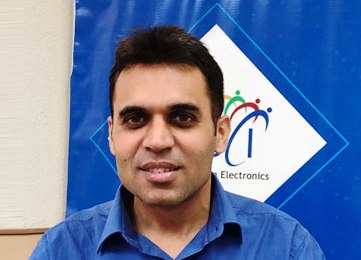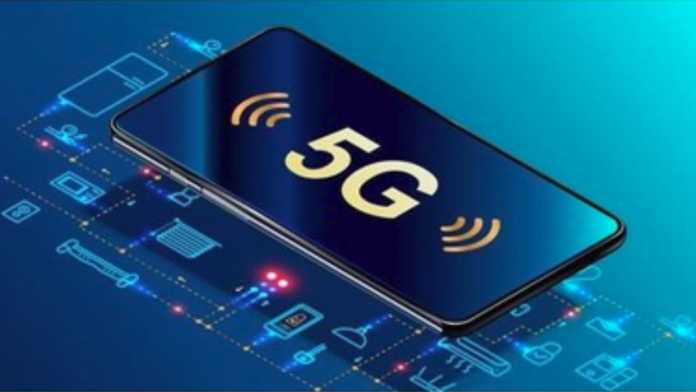Thanks to the revolution brought about by modern technologies in our lives. Nowadays, we can’t even imagine our lives without a Smartphone and a stable internet connection. Today not only computers and smartphones can be connected to the internet, but also other devices we couldn’t even imagine before. In this article, let’s learn about how 5G technology is going to impact our lives. The fifth generation of cellular network technology, 5G will revolutionize the electronics industry and provide new opportunities in consumer electronics. It will prove to be a game-changer for many industries soon as it promises to be.
This dramatic change driven by 5G network deployments will require a skilled labor force trained to design, install and maintain the infrastructure and equipment behind 5G. The wireless industry, which already faces a shortage of qualified technicians for current networks and deployments, must develop even more qualified and skilled technicians through effective on-the-job training, as well as classroom and online education to create a skilled labor workforce to build future generations of heterogeneous networks.
What is 5G?
5G simply stands for the fifth-generation mobile network. It is designed specifically to connect virtually everything, including machines, objects, and devices. The 5G wireless technology promises to deliver faster speeds, lower latency, more reliable communication, huge network capacity, increased availability, and a more uniform user experience. Lower latency means that 5G will allow people to experience much faster load times. A full HD movie can be downloaded in just a few seconds. 5G is simply a more advanced structure for a wireless operation that can accommodate more network devices and more frequencies, making it faster and better.
How does 5G Work?
5G is also OFDM-based (Orthogonal frequency-division multiplexing) like 4G LTE and will function based on the same concepts of mobile networking. However, the new 5G NR (New Radio) air interface will enhance OFDM to provide a much higher degree of flexibility and scalability.
In contrast to 4G LTE, 5G will not only deliver faster, improved mobile broadband services, but will also extend into new service areas, such as mission-critical communications and connecting the large IoT. Many new 5G NR air interface design techniques, such as a new self-contained TDD sub frame design, allow this.
5G Technology Market Overview –
As per the study, the global market of 5G technology is growing year by year. The real growth is seen to be between 2020 to 2025 in which 5G technology market will be developing more than at a CAGR of 70.83%. In fact, by the end of the year 2025, the market can achieve a valuation of USD 700 Bn and is expected to generate 10 trillion USD of revenue by 2035.
Why we need 5G?
5G is required to keep up with the growing number of devices that can now be connected to each other. We won’t be able to experience a high level of interaction between devices; since the current technology does not have the potential to support the growing number of devices that now need internet access. Currently, nearly 7 billion devices are connected in the world, making 5G technology an obvious and vital step for everyone. Technology is changing rapidly and 5G is proof of how technology will play a great role in our daily lives in the future.
Electronics Manufacturing using 5G Technology –
The 5G technology, undoubtedly, will improve the accuracy and efficiency of electronic testing and measurement. 5G technology application is more compre hensive in the fields of mobile phones, automobiles, wearables, household appliances, industrial equipment, and engineering equipment, etc. The fifth-generation technology will also bring new vitality to the core industry chains, such as communication chips, communication modules, antennas, and radiofrequency. In the coming time, the 5G technology will enable the electronic manufacturing industry to work smoothly in a continuous manner in various scenarios, which will help the industry to enhance labor conditions, minimize manual intervention in production lines and greatly improve the controllability of the production process.
New Opportunities in Consumer Electronics with 5G
Due to technology’s proliferation, including wearable devices, smart TVs, connected cars and household appliances, beacons, and other technologies, the future consumer journey will look complicated. Consumers can start and end their shopping experiences on a mobile platform, in-store, or online. It is a fluid movement that will be even harder for retailers to keep up with or predict because it will include a growing number of devices and touch-points.
Increased connectivity and technology usage in Consumer Electronics through IoT, AI, robotics, AR/VR, and others will transform the industry, and 5G network roll-out will be at the heart of it. Devices will provide essential data from sensors give new insights faster, boost efficiency, and allow companies to make more informed decisions.
Real-time applications, such as voice, video, and Ecommerce connectivity, have always been sensitive to disruptions. An unstable connection can result in jitter, latency, and packet loss that translate into obvious performance issues such as delays, echoes, slow checkouts, and lost sales. 5G will prevent these disruptions by enabling users to stay on the same cellular network throughout the journey.
5G will increase demand for electronic components
The impact of 5G on current and future applications will drive increased demand for electronic components. With less than 1 millisecond latency and a peak data rate of 20 GB per second, 5G will enable and speed up the development of self-driving cars, the Internet of Things (IoT), augmented reality, and smart cities. A key module that allows devices to connect with the mobile network is radio frequency front-end (RFFE). With 5G, RFFE module requirements will be more complicated and dynamic. Typically, an RFFE module consists of power amplifiers (PAs), low noise amplifiers (LNAs), switches, duplexers, filters, and other passive components. In addition to RFFE modules, it’s expected that 5G mobile handsets will carry displays that support 4K (3840 x 2160) or even 8K (7680 x 4320) screens to accommodate virtual reality functions. Smartphone makers may also double the memory chip used in 5G smartphones, giving consumers more space to download and use apps.
5G will bring a new era –
5G will bring about a novel technological change for the corporate world. Companies would have a multitude of opportunities to take advantage of if they have access to fast data anywhere. If you let your mind run for some time, then you might start running away with ideas about all the crazy things that 5G could enable.
In addition to playing a major role in the electronics manufacturing industry, 5G can also completely meet the requirements of equipment interconnection and remote interactive applications in the industrial world. Intelligent manufacturing areas such as the Internet of Things (IoT), Industrial Automation Control, Cloud Robot, and so on, would open up a new era of widespread interconnection and deep human-computer interaction with the help of 5G technology.
The future 5G technology will become the key to foster the transformation of smart manufacturing. In multiple scenarios, it can not only connect widely dispersed and scattered individuals, machines and equipment, and build a centralized internet, but also support the entire mobile Internet application with real-time and high reliability.
Need to train manpower
Electronic sector skills council of India (ESSCI) enrolls more and more people, being amongst the largest employers in India to provide jobs to youth. But this time, while there are plenty of new jobs coming in this sector, the biggest challenge exists in getting the skilled manpower specifically in revolutionary technology like 5G. There is a need of creating a demand of talent pool transformation and make them ready for this future generation technology. To cope with the rapid transformation in the industry, youth have to learn about new technologies that have become an important skill these days. Keeping this in mind, the ESSCI is highly committed to preparing the future workforce in these technology-based skill sets. Set up under the Ministry of Skill Development and Entrepreneurship (MSDE), ESSCI is planning to design the job roles that will complement the standards of emerging tech-based skills like 5G and make them job-ready in the near future.









